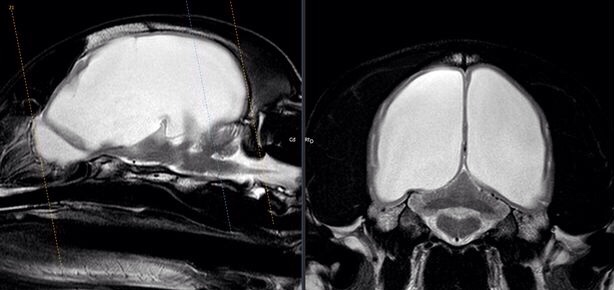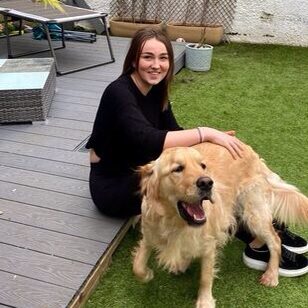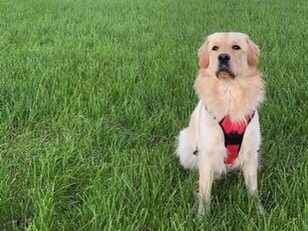
A remarkable veterinarian rescued the life of a dog that was entirely blind by drilling into his skull.
Gus, the Golden Retriever was acquired when he was a young puppy by Sarah Millar, 40, and her daughter Mia, 16. But before long, he began crashing into things and needed Mia to be his guide human on walks. He was losing his ability to observe his surroundings.
Veterinary Specialists Scotland would look after him after eye-disease specialists examined. They noted that his eyes appeared perfectly healthy. Alexandra Ferreira, a neurologist, provided his care at the veterinary clinic.

Gus’ blindness was caused by pressure growing inside his brain. She said he had the biggest case of hydrocephalus that she’d ever seen.
Alex said the result was not the worst outcome. There was a way to drain the fluid and ease the pressure on Gus’s eyes and brain. Gus endured a torturous three-month battle that included numerous procedures.
He needed to have a shunt fit to drain the fluid from his brain into his stomach but there were a series of setbacks along the way. First, he reacted badly to the anesthetic. Then he needed to have a second shunt fitted with a controller to govern the flow.

There were lots of tears along the way and it was a real rollercoaster of emotions. After the last successful operation, the family was finally able to bring their cherished pet home in June.
Sarah said: “There were many times when we were worried to answer the phone in case it was bad news, the worst news.
Instead, one morning we got the call to say that Gus had come off his sedation and had even been for a little walk outside. Not long afterward, Alex said he could come home because she felt he would thrive even more with his family around him.
We owe Alex and VSS everything. She put her heart and soul into saving his life and we couldn’t be more grateful. Gus had his medical treatment at the Linnaeus-owned facility in Livingston, Scotland.

Back on time Alexandra expressed herself: “We don’t have an accurate way to measure the intracranial pressure in dogs and surgery had to be repeated using a high-pressure shunt to improve control.”




